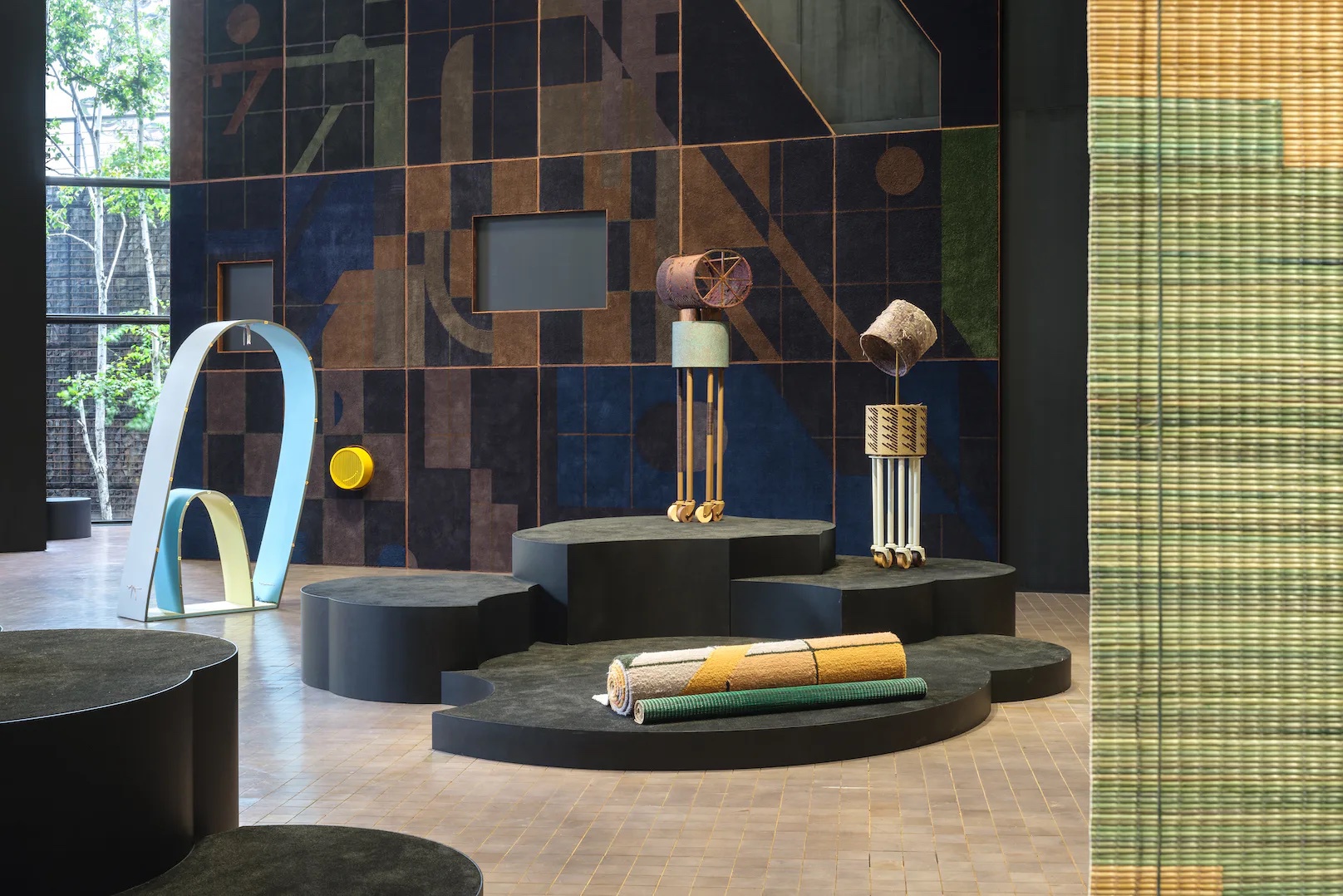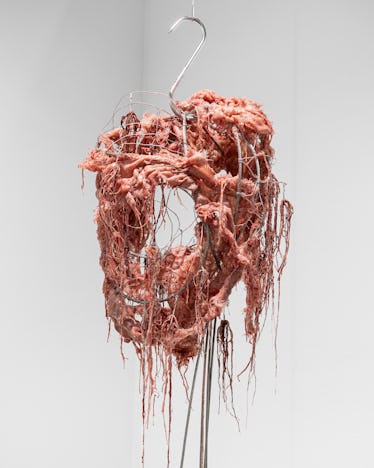Over the last decade, every art fair seems to bring with it an increasing amount of fabric-based works. Frieze Seoul, whose second edition took place in September, was no exception—yet, with a rich textile history baked into the country’s DNA, it was South Korea’s homegrown contemporary artists whose dynamic creations stood out among the crowd. “Textile art is deeply rooted in Korean culture, but it has mostly been considered as craft,” says Tina Kim, whose New York gallery represents emerging and established artists,including some of Korea’s finest. “We have the tradition of bojagi [traditional Korean wrapping cloth, often piecing scraps of fabric together] from the common household, to silk embroidery in the court wardrobe.”
In addition to Kim’s booth at Frieze Seoul being awarded this year’s Stand Prize in recognition of its innovative offerings—which prominently featured sculpture incorporating fabric—the fair’s inaugural Artist Award recipient, Woo Hannah, specializes in textile installations and assemblages. “The global art market has come to widen their boundaries on what is considered fine art, beyond oil painting or monumental metal or stone sculptures,” Kim adds. “As the art world is looking outside of the Western canon, naturally that means that fabric and textile art will be included as it represents centuries of tradition for many countries.” Ahead, meet five contemporary artists who are leading the charge.
Suki Seokyeong Kang at Tina Kim Gallery

Inside Suki Seokyeong Kang’s “Willow Drum Oriole” exhibition at the Leeum Museum of Art. Photograph courtesy of the artist.
Also represented by Kukje Gallery, Suki Seokyeong Kang is one of Korea’s leading contemporary artists. Overlapping with the fair, “Willow Drum Oriole”—her largest institutional solo exhibition to date—opened at the Leeum Museum of Art, allowing for a deeper understanding of the artist’s multifaceted oeuvre. Combining sculpture, painting, video installation, and performance, Kang conceives her works like people in society—operating both individually and collectively.
Mire Lee at Tina Kim Gallery

Mire Lee, Dreamcatchers: The Healing Machine, 2023. Silicone, steel wires, and fabric. Courtesy of the artist.
Another Korean artist making waves across the international art market is Mire Lee, whose work was recently exhibited in the 2022 Venice Biennale, as well as in her first American solo museum exhibition at the New Museum, which closed September 2023. Splitting her time between Seoul and Amsterdam, the artist is known for her otherworldly kinetic sculptural installations that combine industrial materials, like PVC hoses, concrete, steel rods, and low-tech motors, with silicone, towels, nets, chains, and more. Intentionally ambiguous and highly visceral, Lee’s animatronic sculptures walk the line between living organisms and machines. Often evoking oozing carcasses or isolated body parts, her works explore sex and human desire as much as environmental decay, embracing the grotesque and unconventional.
—Stephanie Sporn




